For comparability with other large cities around the world, Melbourne has been defined as the entire urban and semi-urban area extending from Werribee and Melton in the west to Seville, Monbulk, Pakenham and Clyde in the east and bounded in the north by Sunbury, Mickleham, Wollert and St Andrews. Also included in this area is the western half of the Mornington Peninsula. Of the names of the 543 suburbs, neighbourhoods and municipalities in Metropolitan Melbourne, 138 (25.4%) can be found in Scotland, or are based on Scottish family names, Scottish titles or Scottish words. Of course, some of the names are used in other parts of the British Isles as well, but at least 84 of them (15.5%) appear to have a uniquely Scottish connection or are readily identifiable with places in Scotland that are based on the same names.
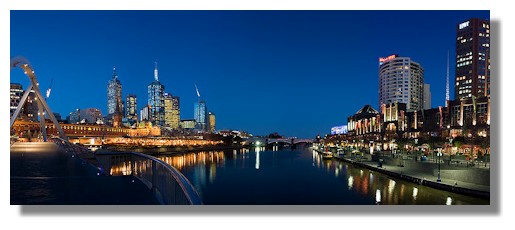
Official suburbs and other localities with names that are definitely or most probably of Scottish origin are:
- Abbotsford (Scottish Borders - the residence of Sir Walter Scott). While there is also an Abbotsford in West Sussex, England, the name of this suburb seems to have a definite link with Scotland. According to one source (Barnes, 1964), an American admirer of Sir Walter Scott by the name of Moss settled here in 1859 and named his home after Sir Walter's residence. A second source (Kennedy & Kennedy, 1989) attributes the name to an estate owned by John Orr in the neighbouring suburb of Kew. See also Glen Waverley, Ivanhoe and Templestowe below.
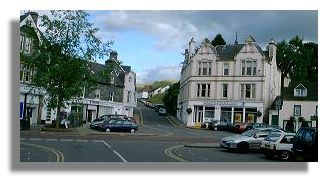
- Aberfeldie (Perthshire, spelt Aberfeldy, near where the Black Watch Regiment was formed in 1739 - see illustration). According to an article retrieved from Wikipedia in March 2007, the suburb takes its name from a property called 'Aberfeldie', located on the corner of Aberfeldie Street and Park Crescent, which its owner, Scotsman James Robertson, had named after a place in Scotland. When the property was sold in 1888 it became the name of the suburb. Barnes (1964) and Blake (1977), on the other hand, state that Aberfeldie was the name of an estate owned by the Napier family. Both explanations point to a Scottish origin.
- Ardeer (North Ayrshire). The suburb was named for the place in North Ayrshire, Scotland, where Nobel's Explosives Co. of Glasgow had its works. The Australian subsidiary of this company took over the Australian Explosives and Chemicals Co. in 1925, and renamed the site Ardeer. (Brown-May & Swain, 2005, p. 35).
- Armadale (two places in Highland and one in West Lothian). The suburb was named after Armadale House, the residence of James Munro (1832-1908), businessman, temperance leader, politician and land speculator, who was born in Armadale in the former Scottish county of Sutherland (now part of Highland).
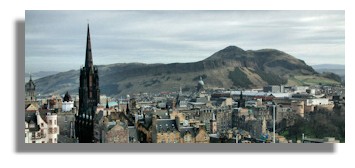
- Arthur's Seat (mound in Edinburgh). This is possibly the oldest Scottish place name in Metropolitan Melbourne. Acting Lieutenant John Murray named the mountain when he entered Port Phillip Bay in the ship 'Lady Nelson' in January 1802, because it reminded him of Arthur's Seat (pictured here) in Edinburgh (Murray's home city). The suburb subsequently took its name from the mountain.
- Avondale Heights (Avondale in the Shetland Islands and Avondale Castle in Lanarkshire). Avondale is also found as a place name both in England and in Ireland. It has been suggested that the name of this suburb honours the Duke of Clarence and Avondale, the eldest son of the future King Edward VII, who died of pneumonia in 1892 (Barnes, 1964; Blake, 1977). If this is correct, then a Scottish connection could be claimed since Avondale is a noble Scottish title used occasionally by the British royal family. The royal title refers to Avondale Castle in South Lanarkshire, Scotland, also known as Strathaven Castle (now a ruin and a Scheduled Ancient Monument accessible to the public).
- Balwyn and Balwyn North - Balwyn is apparently a name that was made up by Scots-born Andrew Murray (1813-1880), journalist, editor of 'The Age' newspaper and wine connoisseur. He established a vineyard where Fintona Girls' School now stands and named his house 'Balwyn', meaning 'house of the vine', using the Gaelic 'Bal' and the Saxon 'Wyn' (Kennedy & Kennedy, 2005; Monash University).
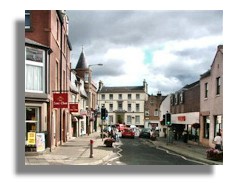
- Blairgowrie (Perthshire). Blake (1977) states that the name does indeed come from the place in Perthshire, Scotland (pictured here). The Rosebud & District Historical Society, on the other hand, mentions a Dr John Blair, suggesting that he gave the name to the area in 1878.
- Braeside (Aberdeen City and Inverclyde). Jill Barnard, writing for The Encyclopedia of Melbourne (Brown-May & Swain, 2005, p. 86) states that in 1909 the Keys family sold part of their property to Arthur Syme (son of 'The Age' proprietor David Syme) who established a horse stud and training establishment, naming it Braeside. David Syme was born at North Berwick, Scotland, in 1827 (Australian Dictionary of Biography).
- Broadmeadows (Dumfries & Galloway and three places in the Scottish Borders). Although this name also occurs in northern and central England, the Melbourne suburb has a definite, albeit indirect, link with Scotland. According to Barnes (1964, p. 15), the suburb was named after an early hotel in the area, the hotel having taken its name from an estate in Berwickshire in the Scottish Borders.
- Burnside and Burnside Heights - there are two places in Angus and one place in each of Fife, Moray, South Lanarkshire and West Lothian called Burnside. An explanation of the origin of the names of these western suburbs (two of Melbourne's newest, dating from the 1990s) has not been found. The location of these suburbs on the Kororoit Creek probably suggests a purely descriptive reason for the names, burn being a Scots and northern English word for a creek or stream.
- Cairnlea (South Ayrshire and Stirling). Information on the origin of the name of this suburb is not available.
- Calder Park (Calder in Highland and Renfrewshire, both minor rivers; Calder Water in North Lanarkshire gave its name to Calderpark in Glasgow, the site of the former Glasgow Zoo). There is also an important river in Lancashire, England called the River Calder. The Melbourne suburb no doubt takes its name from the Calder Highway on which it is situated. According to the Australian Dictionary of Biography, the highway was named after William Calder (1860-1928), roads engineer, who was born near Dunedin, New Zealand, only son of Arthur Calder and his wife Margaret Milne, née Strachan. Victoria's modern network of highways has been described as Calder's greatest achievement. Considering his Presbyterianism, his parents' names and his place of birth in a particularly Scottish part of New Zealand, it is very likely that Calder's ancestry was Scottish.
- Campbellfield - although there are no places in Scotland with this precise name, Campbell is a well-known Scottish family name. The Campbells were once the most powerful of all the Highland clans. The origin of the name is Gaelic - Cambeul -meaning 'crooked mouth'. It is uncertain as to which particular Campbell this suburb owes its name - Neil Campbell, J. D. Lyon Campbell or some other pioneer. The area became popular with Scottish settlers, a Presbyterian Scots Church being built on Sydney Road (Hume Highway) in 1842 (the bluestone structure, erected a little later in 1855, is now on the Victorian Heritage Register).
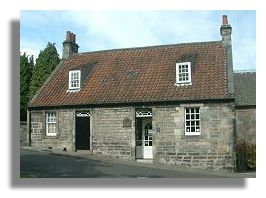
- Carnegie (Angus). Known originally by another Scottish name (Ross Town), the name of this suburb was changed in honour of Andrew Carnegie, the Scottish-American steel-maker and philanthropist who was born in Dunfermline, Fife - see the illustration of his birthplace. Jill Barnard, writing for The Encyclopedia of Melbourne (Brown-May & Swain, 2005, p. 113) states that "in 1808 the area was renamed Carnegie, reputedly in the hope that the American millionaire philanthropist Andrew Carnegie would donate money for the public library."
- Chirnside Park - there is a Chirnside in the Scottish Borders, as well as a Chirnsidebridge and a hotel called Chirnside Hall. The suburb takes its name from the pastoral run purchased in 1854 by Thomas Chirnside and his brother Andrew, emigrants from Berwickshire, Scotland in 1839 (Thomas) and 1840 (Andrew). George Chirnside, a descendant, died in 1941 without a male heir, the property being held in trust until its development as a new suburb in 1962. (Monash University website).
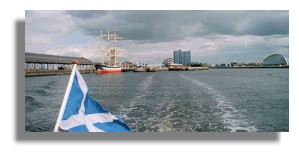
- Clyde and Clyde North - Jenny Coates, writing for The Encyclopedia of Melbourne (Brown-May & Swain, 2005, p. 155) states that these semi-rural suburbs to the east of Cranbourne were named after the River Clyde, Scotland (pictured here).
- Coldstream (Scottish Borders). Coldstream is a descriptive name, applied by Kerr and Robert Black to their estate in the 1850s. Blake (1977, p. 69) notes that the name of this semi-rural suburb comes originally from a place on the English and Scottish borders. The Scottish village of Coldstream was the birthplace of the famous Coldstream Guards. Formed by General Monck in 1659, it is the oldest British regiment to have survived intact over time.
- Craigieburn (Falkirk and Dumfries & Galloway). The Melbourne suburb took its name from an old bluestone inn, which had been named after the village or hill in Dumfries-shire east of Moffat on the A708.
- Flemington (Angus, Scottish Borders and South Lanarkshire; also Flemington House and Loch Flemington in the former shire of Inverness). Although a place by this name can also be found in Wales, the local historical evidence strongly suggests a connection with Scotland, either through Flemington in Inverness-shire or, less likely, Robert Fleming, a local businessman who supplied meat to patrons of the nearby race course. The most probable explanation is that the pastoralist and land speculator James Watson (see also Keilor and Rosanna below) named it after 'Flemington Estate', which his father-in-law managed. According to the Librarian at Moray Council, there is still a farm called Flemington situated between Nairn and Inverness.

- Gladstone Park - there are places called Gladstone and Gladstone Boreland in South Lanarkshire, and Gladstone Farm in Renfrewshire. Gladstone is a Scottish family name, well established in Lanarkshire by the thirteenth century (Herbert de Gledstan was one of the signatories of the Ragman Roll). The most famous bearer of this name was William Ewart Gladstone (1809-1898), one of Queen Victoria's Prime Ministers. Although he was born in Liverpool, his parents were both Scottish and he proudly claimed that "not a drop of blood in my veins is not Scottish." The name of this Melbourne suburb comes from a property owned by Thomas Gladstone between 1869 and 1883.
- Glen Huntly (there is a Huntly in Aberdeenshire, as well as many other references to Huntly throughout Scotland as in Huntly Burn, Castle, Cott, Hall, Rigg, etc). Glen Huntly was the name of a fever-stricken ship that docked in Port Phillip Bay in 1840. A quarantine station was set up on Point Ormond, Elwood (then known as Red Bluff).
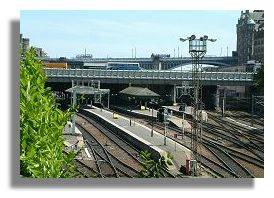
- Glen Waverley and Mount Waverley - Waverley is the name of the main railway station in Edinburgh (see illustration). The station received its name in the 1850s, from the title of a series of novels by Sir Walter Scott (a monument to whom had been erected in Edinburgh near the future railway station in 1844). Sir Walter, in turn, had borrowed the name from Waverley Abbey, a Cistercian monastery in Surrey, England founded in 1128 but now a ruin. The Melbourne suburbs of Glen Waverley and Mount Waverley derive their names from that of an earlier township (now the suburb of Malvern East) which had been privately surveyed in 1853 and which was named Waverley by its owner after the Sir Walter Scott novels - see also Abbotsford above and Ivanhoe and Templestowe below.
- Glenferrie has a definite connection with Scotland although there is no place in Scotland by this name. The name owes its origin to a property in the area owned by a Scottish settler and solicitor, Peter Ferrie (Lay, 2003).
- Glengala - possibly based on Gala Water, the river in the Scottish Borders on which the town of Galashiels is situated.
- Glenroy (valley in Lochaber, Perthshire). This suburb takes its name from an estate owned by Duncan Cameron, who named it after a place in Inverness-shire from which he came. As noted in the Monash University website, "Cameron was one of several Scots farmers in the district whose tenure is still visible in the bluestone Scots church at Campbellfield."
- Gowanbrae - there are no Scottish towns or villages by this name. However, Gowanbrae is the name of a guesthouse, built in 1917, in Dufftown, Moray. In a communication received from its owners, it was stated that this guesthouse has always been known as Gowanbrae and that it receives many Australian visitors. Gowanbrae is one of Melbourne's newest suburbs (1990), which increases the chances that a visitor to the Scottish guesthouse may have named the suburb. Gowan is a Scots word for a daisy, more particularly the mountain daisy and the element 'brae' (pronounced bray) means a hill or hillside. It is interesting to note that most of the streets in this suburb are named either for flowers and trees commonly found in Britain or for places in Scotland (Balerno Circuit, Lanark Way, Lauder Court, Paisley Court, Perth Court, Rutherglen Crescent).
- Gowrie (Carse of Gowrie, Perthshire). It is quite possible that this locality in Fawkner was named for the Earl of Gowrie, Brigadier-General Alexander Gore Arkwright Hore-Ruthven (1872-1955), who was Governor-General of Australia from 1936 to 1944.
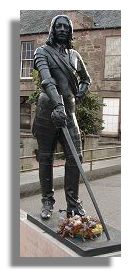
- Graham - there are many places in central and southern Scotland beginning with Graham from the surname; also a few just over the border in Northumberland and Cumbria. The most famous bearer of this essentially Scottish name was the brilliant soldier James Graham, the 1st Marquess of Montrose (1612-50). His statue in the town of Montrose is shown here. The Port Phillip neighbourhood commemorates James Graham (1819-1898), merchant and politician (Barnes, 1964). Although Graham was born in County Clare, Ireland, his cultural heritage seems to have been more Scottish than Irish, Graham having spent his teenage years in Cupar, Fife.
- Greenvale (Highland, two places in the Orkney Islands and one in the Shetland Islands). This may be a purely descriptive name, with no reference to any of its namesakes in Scotland. A Scottish connection cannot be ruled out, however, given the proximity of the suburb to several other localities in this part of Melbourne with Scottish names. Moreover, the majority of street names in Greenvale are Scottish.
- Heatherton - the only place in the British Isles with this descriptive name - a farm called Heatherton Park - is in the English county of Somerset. The Melbourne suburb can be claimed for Scotland, however, since the name was selected (in 1880) at the request of the local people by Mrs Peter Hotton, postmistress and wife of the local school-master, on account of the plant cover which was similar to Scottish heather. (Monash University, Australian Places and Kennedy & Kennedy, 2006, p. 125).
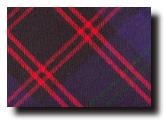
- Hume (Scottish Borders). The Hume/Home family was powerful in the Scottish Borders - that's their tartan here. The name of this municipality honours Hamilton Hume (1797-1873), explorer, who was born at Parramatta in New South Wales. Hume's ancestry was Ulster Scots, his grandfather, James Hume, a Presbyterian minister, having moved from Scotland to County Down, Northern Ireland, in 1746.
- Ivanhoe and Ivanhoe East - Ivanhoe is the title of one of Sir Walter Scott's most successful novels but the setting for this novel was Medieval England, which accounts for the rather 'un-Scottish' name. According to Kennedy & Kennedy (2006), these suburbs take their name from the Ivanhoe estate, which belonged to Richard Pennor. The name was in use as early as 1853 and was adopted from Sir Walter Scott's novel. Several streets in Ivanhoe and Ivanhoe East are named for people and places in the novel (Athelstane, Cedric, Ravenswood, Robinhood, Rotherwood, Wamba and Wilfred - all essentially English names). Other streets in Ivanhoe that have associations with Sir Walter Scott are Abbotsford, Kenilworth and Waverley - see also Abbotsford and Glen Waverley above and Templestowe below.
- Kealba - this appears to be a made-up name, derived from Keilor (see below) and its other neighbour St Albans and is therefore indirectly half-Scottish in origin. Alba, incidentally, is the Gaelic name for Scotland.
- Keilor (Perth & Kinross, spelt Keillour; also Inverkeilor in Angus) and Keilor Downs, Keilor East, Keilor Lodge, Keilor North and Keilor Park by association. Keilor appears to have been named by James Watson (see also Flemington above and Rosanna below) after his father's farm near Forfar in Angus (information supplied by Lenore Frost, Essendon Historical Society). Keilor is said to mean 'plenty' in Gaelic (gu leòr). Reed (1973), on the other hand, attributes an Aboriginal meaning ('brackish water') to the name Keilor but this is highly doubtful.
- Kerrimuir (Angus, spelt Kirriemuir). This Box Hill North neighbourhood takes its name from an early estate in the area. Williams (1985, p. 59) provides the following explanation: "David Fithie lived on an orchard property in Springfield Road. His daughter, Ida, subdivided the property in 1950 and the narrow roadway on the Western side, known as Fithie's Lane, was widened and named Kerrimuir Street after the original Fithie home in Scotland." In the article on Kerrimuir, Victoria, retrieved from Wikipedia in March 2007, it is noted that the logo for Kerrimuir Primary School is one of Scotland's national emblems, the thistle.
- Kilsyth and Kilsyth South - Kilsyth is a large town in North Lanarkshire, to the north-east of Glasgow. According to Brown-May & Swain (2005), these suburbs were indeed named after the Scottish town.
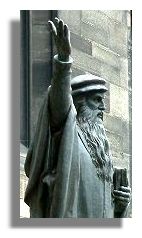
- Knox and Knoxfield - there is a Knox Hill in Aberdeenshire, Knox Knowe in the Scottish Borders and Knoxfauld in Perth & Kinross but the name is also found in England, including the village of Knox on the outskirts of Harrogate in North Yorkshire. Knox is also a Scottish family name. The statue of John Knox (1513-1572), the leader of the Reformation of the church in Scotland, is illustrated here. The City of Knox and the suburb of Knoxfield honour Melbourne-born Sir George Hodges Knox (1885-1960), Speaker of the Victorian Legislative Assembly between 1942 and 1947 and long-serving member of the Assembly for Upper Yarra and Scoresby (1927-1960). Sir George's paternal grandparents arrived in Victoria from Berwickshire, Scotland in 1850 (Australian Dictionary of Biography).
- Macaulay - the MacAulays are a Scottish clan descended from two entirely separate sources, Gaelic and Norse. According to Barnes (1964), this Moonee Valley neighbourhood is said to derive its name from Lord Macaulay, a Whig statesman.
- Macleod and Macleod West - Macleod is an ancient Scottish clan of Norse origin whose ancestral seat is Dunvegan Castle on the Isle of Skye. These suburbs were named in 1911 after Malcolm Alexander MacLeod, through whose Strathallan estate the newly extended railway line ran (O'Callaghan, 1918; Barnes, 1964). Many of the streets in Macleod have Scottish names.
- McCrae - this suburb on the Mornington Peninsula was named for Andrew and Georgiana McCrae who came to Melbourne from Scotland in the 1840s. The McCraes were well known in the early days of Melbourne. They leased a pastoral station near Arthur's Seat from 1844 to 1853 and built a homestead there that is still standing (Jill Barnard, Encyclopedia of Melbourne, p. 43).
- McKinnon - the MacKinnons are a branch of the Clan Alpin, claiming descent from Fingon, a great-grandson of Kenneth MacAlpin. The name means 'son of the fair born' in Gaelic. Barnes (1964) states that the suburb was brought into being with the opening of a railway station at McKinnon's Road in 1881, the road itself having been named after an early landowner.
- Meadow Heights - like Westmeadows (see below), this name can arguably be claimed for Scotland since it is based on Broadmeadows, its southern neighbour (Meadow Heights was known originally as Broadmeadows North). Broadmeadows, as indicated above, was named for a place in the Scottish Borders.
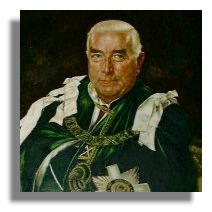
- Menzies Creek - there is a Menzieshill in the city of Dundee. Menzies is a Scottish family name of Norman origin. Robert de Meyners, Great Chamberlain of Scotland, is credited with having taken the name to Scotland in the 13th century. Australia's - and Melbourne's - most famous Menzies was Sir Robert Gordon Menzies, Prime Minister from 1939 to 1941 and 1949 to 1966. The photo of the portrait of Sir Robert was taken in Menzies Castle in Perthshire where it hangs in a place of honour. The name of the Melbourne suburb, however, has no connection with Australia's long-serving Prime Minister. According to Coulson (1959), this semi-rural suburb in the Dandenong Ranges was named in the 1860s after John Menzies, an early gold prospector who decided to settle in the area.
- Montrose (Angus). One of the reasons for the popularity of the name Montrose throughout the English-speaking world may have to do with Sir Walter Scott's novel 'The Legend of Montrose', published in 1819. James Walker, a local landowner, gave the Melbourne suburb its name in the early 1890s. As pointed out by Peter Baddeley in the Encyclopedia of Melbourne (p. 483), James Walker's son owned a store in neighbouring Kilsyth called 'Rose Mont'. Montrose therefore appears to be the result of creative inversion rather than a direct borrowing from Scotland.
- Moreland (Perth & Kinross). The suburb takes its name from the estate of the first settler in the area, Dr. Farquhar McCrae, which was named, in turn, for his father's estate in Jamaica. Farquhar McCrae, magistrate and speculator, purchased the land in 1839; he was the brother-in-law of Georgiana McCrae - see McCrae above (Monash University, Australian Places).
- Niddrie (Edinburgh and Longniddry in East Lothian). The name comes from the Brythonic (a form of Welsh once spoken in that part of Scotland) 'newydd' meaning "new", and 'tref' a "house" or "hamlet". There are two theories concerning the origin of the name of this suburb. The first is that it took its name from a property called Niddrie that had been built between 1869 and 1871 by Henry Stevenson, and which he had named after the Edinburgh suburb (article on Niddrie, retrieved from Wikipedia in March 2007). Blake (1977), on the other hand, is of the opinion that the suburb was named for Niddry Castle in West Lothian, owned by the Earl of Hopetoun, Governor of Victoria from 1889-1895.
- Ormond (Ormond Castle in Highland, now a ruin but once the home of the Black Douglases many centuries ago). According to O'Callaghan (1918) this suburb was named for Captain Francis Ormond, commander of the immigrant ship 'John Bull' which arrived in Melbourne in 1840 but more recent sources suggest his son, Francis Ormond, the Victorian philanthropist who gave money to Melbourne University in the 1800s (Kennedy & Kennedy, 2006, p. 208). On the other hand, Point Ormond, a promontory on Port Phillip Bay, was definitely named after Captain Ormond. The Ormond family came from Aberdeen in Scotland (Australian Dictionary of Biography).
- Panton Hill - Panton, according to a heraldic website, is one of several variations of the Scottish surname Pointon, and is of Norman origin. The semi-rural suburb of Panton Hill was named in 1859 for Joseph Anderson Panton (1831-1913) as a tribute to the role he played in restoring good relations between European and Chinese workers on the local goldfields. Born at Knockiemil, Aberdeenshire, Panton became a police magistrate for the Heidelberg and later the Melbourne districts.

- Rob Roy - the name of this essentially rural locality in Smiths Gully on the northern fringe of metropolitan Melbourne is probably a reference to Rob Roy McGregor (see illustration), the Scottish outlaw whose cattle rustling lifestyle was romanticised by Sir Walter Scott.
- Rosanna has a definite connection with Scotland. The suburb was named for Elizabeth Anne Rose, the wife of James Watson (see Flemington and Keilor above). Both Elizabeth and James had emigrated from Scotland (information supplied by Lenore Frost, Essendon Historical Society, April 2004).
- Roxburgh Park (Roxburgh in the Scottish Borders). The following explanation is given in the Monash University, Australian Places website: "In 1988-90 the Victorian Government Urban Land Authority purchased the land, which included Roxburgh Park, a farm dating back to about 1848. The name was given by Thomas Brunton in about 1885, after his house in Scotland when he acquired the farm." Jenny Keating, writing for the Encyclopedia of Melbourne (Brown-May & Swain, 2005, p. 617) adds that the suburb was formerly known as Ruthvenfield.
- Ruthven (Aberdeenshire, Angus, Scottish Borders, Highland and Moray). The railway station and surrounding neighbourhood in the suburb of Reservoir were named in honour of local resident and WWI Victoria Cross recipient William Ruthven (Brown-May & Swain, 2005, p. 627). Ruthven is a Scottish family name and a recognised clan.
- Skye (Inner Hebrides). According to Blake (1977, p. 240), the first settlers came from the Isle of Skye in Scotland. Jenny Coates, writing for the Encyclopedia of Melbourne (Brown-May & Swain, 2005, p. 665) elaborates on the history of the name of this suburb: "Named after the Isle of Skye, birthplace of some early settlers including the Bethune, Beaton and Murdoch families, this area was renamed Lyndhurst South in 1894 after publicity about a local murder but resumed its earlier name in 1964."
- Spotswood (Scottish Borders, spelt Spottiswoode). The spelling of the name of this suburb was originally 'Spottiswoode', as in Scotland, having been named after Captain George Spottiswoode but was changed to Spotswood to honour John Stewart Spotswood, a prominent pioneer. Lay (2003, p. 58) notes that from the late 1840s to the 1860s, John Spotswood operated a ferry across the Yarra River near today's West Gate Bridge. The Spotswood family achieved prominence when in 1868 a daughter, Louisa Jane, married Richard John Seddon, who later became Premier of New Zealand. (Lancashire-born Seddon was half English and half Scots according to an article in the Te Ara Encyclopaedia of New Zealand.)
- St Andrews (Fife; and Scotland's patron saint). Although St Andrew is also honoured by place names in England and Wales, the name of this suburb in the far north of metropolitan Melbourne has as a definite Scottish connection. Known originally as the Caledonia goldfields, then Queenstown, the name recalls the town in Fife, Scotland, famous for its golf course and university (Martin, 1944).
- St Andrews Beach (St Andrews, Fife and the patron saint of Scotland). No information has been found on the origin of the name of this coastal suburb in the Mornington Peninsula. The suburbs of St Andrews Beach and St Andrews are at opposite ends of metropolitan Melbourne, about 80 kilometres (50 miles) apart.
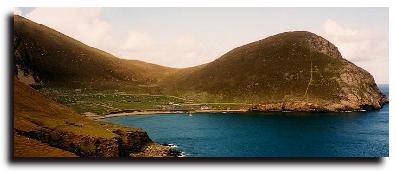
- St Kilda (Western Isles - see illustration above) and St Kilda East and West by association. According to the Penguin Dictionary of British Place Names (2003) the name of this remote island derives from an Old Norse word 'skildar' meaning 'shields', creating a bogus 'saint' in the process of its anglicisation. The suburb took its name from a cargo yacht "Lady of St. Kilda" which was anchored in Port Phillip Bay during 1841-42, having been put up for sale or barter (Monash University, Australian Places).
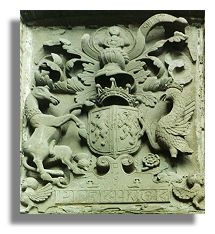
- Strathmore and Strathmore Heights - Places called Strathmore (Gaelic for 'big valley') can be found in Aberdeenshire, Angus, Argyll & Bute, Highland, and Perth & Kinross. There are two theories regarding the origin of the name of the Melbourne suburb. Jill Barnard, writing for the Encyclopedia of Melbourne (Brown-May & Swain, 2005) notes that Thomas Napier, an early landowner who purchased a substantial estate in the area, came from Strathmore in Scotland. Barnes (1964) on the other hand states that the suburb was known originally as North Essendon, the name being changed during the 1940s in honour of the late Queen Mother, her parents being the Earl and Countess of Strathmore (Barnes, 1964). The Strathmore crest is shown here.
- Taylors Hill - see Taylors Lakes below.
- Taylors Lakes - Taylor is a very common surname in both Scotland and England. A survey of surnames undertaken in the 1970s suggests that it is the 5th most common surname in England compared with the 14th in Scotland. There is a definite Scottish connection, however, in the case of the Melbourne suburb. Jenny Keating, writing for the Encyclopedia of Melbourne (Brown-May & Swain, 2005, p. 709) states that the suburb's name "reputedly comes from the action taken by William Taylor, 19th-century owner of the large property Overnewton, to dam a gully on the Keilor-Melton Road to provide water for his household and garden." Overnewton Castle, with its Scottish baronial style turrets, was built in 1849 and is located in the nearby suburb of Keilor. Since Taylors Hill is adjacent to Taylors Lakes, it is a reasonable assumption that the name of this new suburb is an indirect reference to William Taylor and is therefore a Scottish name.
- Templestowe and Lower Templestowe - Although Templestowe is essentially an English name, there is a "Scottish" connection since it was used as a (probably fictitious) place name in Sir Walter Scott's highly successful novel, Ivanhoe, set in Medieval England. As pointed out by Kennedy & Kennedy (2006, p. 262) "there is nothing to show who gave the name or why it was given." - see also Abbotsford, Glen Waverley and Ivanhoe above.
- Upfield - this suburb can be claimed for Scotland since, according to Barnes (1964), the name is a contraction of 'Upper Campbellfield'. Upfield was the name given to the railway station built in 1959 to service the Ford Motor Company assembly works, the name subsequently being applied to the suburb that quickly developed around the station. Less plausibly, the name is possibly descriptive of the area's open country (Monash University, Australian Places).
- Viewbank (Aberdeenshire and Perth & Kinross). The suburb evidently takes its name from the property established by James Williamson in 1839-40 (Brown-May & Swain, 2005, p. 750). According to the Parliament of NSW website, James Williamson (1811-1881) was born in Edinburgh. He purchased Viewbank in 1839, was an Elective Member of the first Legislative Council 1843 - 1856 for the District of Port Phillip and moved to NSW in 1858.
- Watsons Creek - According to the Shire of Nillumbik website, this suburb was named after Sandy Watson, "who farmed fat cattle and sold butter and meat to the miners on the One Tree Hill, Happy Valley and Queenstown diggings." Sandy is a typically Scottish pet name (short for Alexander), which, together with the fact that the Queenstown diggings were originally known as Caledonia (see St Andrews above) strongly suggests that Watson was himself Scottish.
- Westgarth - although Westgarth occurs as a place name in Cumbria, northern England and not in Scotland, the neighbourhood was actually named for Scots-born William Westgarth (1815-1889), the first President of the Melbourne Chamber of Commerce (The Encyclopaedia of Australia, New Zealand and Papua-New Guinea, 1965, Vol 3).
- Westmeadows - like Upfield (see above), this name can arguably be claimed for Scotland since it is based on Broadmeadows, its eastern neighbour (Westmeadows was known originally as Broadmeadows West). Broadmeadows, as indicated above, was named for a place in the Scottish Borders.
There is a possibility that some of the following suburbs and neighbourhoods may have a Scottish connection. However, these names are also associated with other parts of the British Isles, or may have other associations, e.g. Aboriginal in the case of Bangholme.
- Bangholme - there is a Bangholm Bower and Bangholm Terrace in the City of Edinburgh. There is disagreement as to whether the origin of the name of this suburb is Scottish. Barnes (1964) attributes it to "a place in Scotland", without specifying where precisely, whereas a Monash University website (Australian Places) suggests that it is a combination of an Aboriginal word "baungan", possibly meaning 'hut' and the Old Norse word for a water meadow.
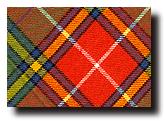
- Baxter - there is a Baxterknowe in Perth & Kinross and Baxtersyke in East Lothian, both based on this Scottish family name (see tartan). Baxter was (and still is) a common surname in Angus. It is an occupational name derived from the Old and Middle English words for a baker. Baxter also appears in several place names throughout England and there is a Baxter's Bank in mid-Wales as well. The Melbourne suburb was named for Benjamin Baxter, Clerk to the Bench of Magistrates in Melbourne in 1838 and a landowner in the area. Although bearing a Scottish name, Benjamin Baxter actually came from Ireland.
- Bell - a large number of places in Scotland feature the element 'Bell', e.g., Bell Bay in North Ayrshire, Bell Craig in the Scottish Borders and in Dumfries & Galloway, Bell Hill in Borders, Bell Rock in Fife and South Ayrshire, Bell Sike in Borders, Bell Stane in North Ayrshire, Bell Wood in Aberdeenshire, plus many others. Place names starting with this Scottish family name are also found all over England. According to Barnes (1964), the neighbourhood was named after the railway station that was opened in 1889, which in turn was named for Bell Street. The entry in the Encyclopedia of Melbourne (2005, p. 68) suggests two possible sources for the name: "Created in 1889 when a railway station was opened at Bell Street, Bell was named either after John Pascoe Fawkner's Coburg estate or 1870s landowner Francis Bell." Little is known about Francis Bell, with the result that it would be premature to class this neighbourhood as having a definite link with Scotland.
- Bellfield - the only occurrence of this name as a place name in the British Isles is in Scotland (in Aberdeenshire, Fife, Highland, Perth & Kinross and South Lanarkshire). It is possible, however, that this suburb simply took its name from Bell Street (see Bell above), although the existence of places in Scotland called Bellfield may have influenced the choice of name.
- Blackburn (Aberdeenshire, Borders, Dumfries & Galloway, Highland, Moray, South Lanarkshire and West Lothian) and Blackburn North and South by association; Blackburn is found just as frequently in northern England and the suburb may in fact have been named for the town in Lancashire. On the other hand, it is probable that the suburb was named either for George Blackburn, an early pioneer and sawpit owner, or after James Blackburn, an English engineer and former convict who designed Melbourne's Yan Yean water supply.
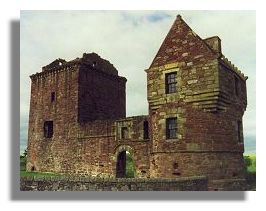
- Burleigh (Perth & Kinross) also in southern England. Burleigh Castle near Kinross is shown above. No explanation has been found for the origin of the name of this semi-rural locality north of Monbulk in the Shire of Yarra Ranges. One wonders whether the name has any reference to Alexander Bruce (1849-1921), 6th Lord Balfour of Burleigh.
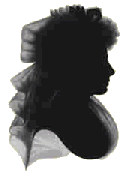
- Clarinda - Known originally as Bald Hills, the name was changed to Clarinda in 1912 to avoid confusion with Bald Hills in the Ballarat area (Monash University, Australian Places, 2004). Blake (1977, p. 66) states that the name derives from Clarinda in Iowa, U.S.A. One nevertheless wonders whether the name of the Melbourne suburb refers to one of Robert Burns's sweethearts, Agnes MacLehose (née Craig), a married woman and Edinburgh socialite who corresponded with the Scots poet under the pseudonym of Clarinda. Burns's correspondence with "Clarinda", using the pen name "Sylvander", was an open secret. According to the Kingston Historical website, many of the early settlers to the Clarinda area were people newly arrived from Scotland.
- Dennis (Dennis Loch, Head and Ness in the Orkney Islands) but Dennis also occurs in English place names. The name of this neighbourhood in Northcote honours Samuel Dennis, a stonemason who built a house in Walker Street and became a mayor of the former city of Northcote (Kennedy & Kennedy, 2006, p. 84). According to Ancestry.com, Dennis is both an English and an Irish family name, which would greatly reduce the chances of a Scottish connection in the case of this neighbourhood.
- Fingal - there is a sea cave called Fingal's Cave on Staffa, an uninhabited island in the Inner Hebrides. However, the administrative area due north of Dublin, Ireland is also called Fingal while a king by this name ruled the Isle of Man during the 11th century. No information has been found on the reason for naming this semi-rural suburb on the southern shore of the Mornington Peninsula. The name is possibly a reference to Fingal, the son of the giant Comhal in Gaelic mythology, and who was popularised as the hero of an epic poem by 18th-century Scots poet-historian James Macpherson. It is equally possible, however, that the suburb was named for the Irish county (Irish for 'fair-haired strangers', a reference to the Vikings who established themselves in the Dublin area in the 9th century).
- Forest Hill (a hill in Dumfries & Galloway) but far more likely to be named for one of the many places in England, including the south London suburb. Melbourne historians consider this to be a descriptive name, taken from the name of a cottage occupied by a Captain Bunbury, but it is nevertheless interesting to note that an early name for this area was Scotchman's Hill. It is perhaps also relevant to note that a Lieutenant Charles Forrest built a house called Waterloo Cottage in the area in 1841 (Blake 1977, p. 100). Forrest is a Scottish family name.
- Glen Eira has a Scottish ring to its name. Little is known about the reason for the name, which was taken from a residence once owned by Henry Lancelot Ricketson (1883-1931). Eira also sounds distinctly Welsh.
- Hallam (Highland). There are, however, many places in central England with Hallam as part of the name, for example, Hallam Fields in Derbyshire and Hallam Moors in South Yorkshire; also Hallam University and Hallam Football Club in Sheffield. The Melbourne suburb was actually named after William and Mary Hallam (ancestry not reported), who in 1856 purchased fifty acres on the corner where the Hallam's Road Hotel now stands.
- Harrisfield - Harris is a large island in the Outer Hebrides; it is also the name of a town in Highland. The suburb was actually named during the 1950s after Councillor Harris (Kennedy & Kennedy, 2006, p. 123). As a surname, Harris is far more likely to be English than Scottish.
- Hillside (Aberdeenshire, Angus, City of Edinburgh, Dumfries & Galloway, Fife, Inverclyde, Moray, Orkney Islands, Perth & Kinross, Shetland Islands and South Lanarkshire) but just as commonly found in England, sometimes spelt Hill Side, and is also found in Wales. According to Blake (1977), Farmer David Hill used to live in the area. Hill is an English as well as a Scottish family name.
- Kings Park (City of Glasgow and Stirling) also in Bournemouth, England and Carmarthenshire, Wales.
- Merlynston - there are two theories regarding the name of this Coburg neighbourhood. Barnes (1964, p. 29) states that the railway department named the local station Merlynston in 1919, after Merle and Lyn Hodge, daughters of a local landowner. The Encyclopedia of Melbourne, on the other hand, attributes the name to the daughter of Donald Bain, former Coburg councillor and land developer (in which event a Scottish connection becomes a possibility).
- Mount Cooper - places based on the family name Cooper are found throughout both Scotland and England. Scottish examples include Cooper Cleuch (Scottish Borders), Cooperhill (Aberdeenshire and East Ayrshire) and Cooper's Knowe (Highland).
- Newlands (Scottish Borders and City of Glasgow) also in England. This is probably a purely descriptive name, with no intended reference to any place in the UK and was first applied to the area in 1860.
- Olivers Hill - there is an Oliver in the Scottish Borders, the only occurrence of Oliver as a place name in the British Isles. As a family name, it could be Scottish, English or Irish, from the Norman-French Olivier. In Scotland, the Olivers were once a significant family on both sides of the Scottish-English border and now have their own family tartan. The Olivers Hill locality of Frankston was named after local Frankston fisherman, James Oliver, who built the first cottage on the hill, in the mid-1800s, from where he kept watch for fish in the waters below (Wikipedia article on Olivers Hill, Victoria, retrieved in March 2009, citing Michael Jones, Frankston: Resort to City. Allen & Unwin: Sydney. 1989). No information has been found on James Oliver's cultural heritage with the result that it would be premature to class Olivers Hill as a Scottish place name.
- Point Cook - Cook is a Scottish as well as an English name. The Scottish Cooks are a sept of the Stewarts; their ancestral lands were on the Isle of Bute. Point Cook was originally spelled Point Cooke. Jill Barnard, writing for The Encyclopedia of Melbourne (2005, p. 547) states that Point Cook was named after Lieutenant John Murray Cooke of HMS Rattlesnake, which visited Port Phillip Bay in 1837. Nothing is known of the identity of Lieutenant Cooke but the Cooke family name occurs far more frequently in England than in Scotland. A Scottish connection is still a possibility, however, given Lieutenant Cooke's middle name, Murray.
- Smiths Gully - Smith is the most common surname in both Scotland (where there is a family tartan) and England; it is also the 5th most common surname in Ireland and 13th in Wales. According to Blake (1977) this semi-rural suburb near St Andrews and the former Caledonia goldfields was most likely named after a Captain Smith who discovered gold there in 1856.
- Thomastown (Aberdeenshire) but found more commonly in Ireland and is also found in Wales. One theory, put forward in the Monash University website, attributes the origin of the name of this suburb to the fact that during the 1850s there were a large number of families in the area with the surname of Thomas. If this is indeed the reason, then the connection is more likely to be Welsh, Irish or English rather than Scottish. According to Blake (1977), the name refers to settlers John, Joseph, Francis and Alfred Thomas.
- Watsonia and Watsonia North - these suburbs were named after Frank Watson who bought land in the area about 1900. As pointed out by Kennedy & Kennedy (2006), the local city council "called the railway station after him because of his efforts to raise money from local residents to pay for the station." (p. 281). Frank Watson's ancestry has not been reported but there is a strong probability that his heritage was Scottish considering that a 1976 survey of family names in Great Britain showed that Watson was the 17th most common family name in Scotland, whereas its ranking in England and Wales was much lower (47th).
A final category of suburban names comprises places that can be found in Scotland but which, in Melbourne's case, definitely or most probably have no Scottish connection.
- Bellevue (Dumfries & Galloway, Highland, Orkney Islands and Perth & Kinross) also in England, Ireland and Wales, sometimes spelt Belle Vue. As far as local historians can tell, the Melbourne suburb was given its name for purely descriptive reasons. "A locality in North Balwyn, Bellevue's local street names (including Bellevue, Jolie Vue, Mountain Vue, Hillview, Highview, Viewpoint) reflect the area's panoramic vantage point with views to Central Melbourne and Mount Macedon." (Andrew May, The Encyclopedia of Melbourne, 2005, p. 68).
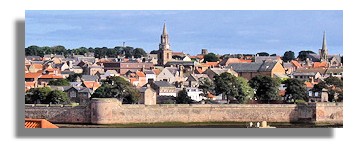
- Berwick (Aberdeenshire, and the name of a former border county of Scotland) but the name also occurs frequently in England and Wales. According to the Berwick Historical Society (Stephan, 1994) this Melbourne suburb, which started out life as an agricultural settlement, was named after Berwick-upon-Tweed, the English-Scottish border town in Northumberland (pictured here). This town, which was originally Scottish, changed hands between Scotland and England at least 13 times between 1296 and 1482. As reported in the Rampant Scotland Newsletter of 9 October 2004, a Berwick-upon-Tweed City Councillor is on record as having suggested that in Berwick, 25% of people think of themselves as Scottish, 25% as English and 50% as Berwickers. It may interest readers to learn that Berwick-upon-Tweed Football Club is the only English club in the Scottish League.
- Black Rock (Argyll & Bute, Highland and the Orkney Islands) but just as common in England and is also found in Ireland and Wales. The Melbourne suburb was actually named for a place in Ireland, possibly the Black Rock in Dublin Harbour.
- Brookfield (Renfrewshire) also all over England and on the Isle of Man. The suburb takes its name from a property owned by a Mr H. A. Crawford, who was born in a place in the USA called Brookfield (Blake 1977).
- Carrum (Perth & Kinross) and Carrum Downs by association. This is an Aboriginal name, however, and is therefore only coincidentally Scottish. These suburbs ultimately take their name from a swamp known in the 1840s by its Aboriginal name - Carrum Carrum, Garrum Garrum, or Garem Gam (Clark & Heydon, 2002).
- Clayton and Clayton South - there is a place in Fife called Clayton, but this name is far more commonly found throughout England. These suburbs were named either after Clayton Road or the property 'Clayton Vale', owned in the 1860s by the lawyer John Hughes Clayton who hailed from Yorkshire. (Barnes, 1964; Blake, 1977; Lay, 2003)
- Coatesville - there are places called Coates in the City of Edinburgh, East Lothian, Fife and Midlothian, but Coates also features in many English place names. The Melbourne suburb was named after Councillor L.R. Coates who served several terms as mayor of the former city of Moorabbin. (Kennedy & Kennedy, 2006; Brown-May & Swain, 2005). Leslie Robert Coates (1898-1976) was born in Brighton, Melbourne. Given that Coates was of the Methodist faith, his cultural heritage was more likely to have been English than Scottish.
- Dallas (Moray). The suburb honours Sir Reginald Alexander Dallas Brooks (1896-1966), Governor of Victoria from 1949 to 1963. Whilst on the surface this name may appear to be Scottish, Dallas Brooks was born in England at Cambridge, his religion being Anglican and his cultural heritage English (Australian Dictionary of Biography).
- Deer Park (Dumfries & Galloway, and Highland) also three places in England. The name of the Melbourne suburb is probably purely descriptive of the fact that deer were once kept in the area by the Melbourne Hunt Club (Reed, 1973).
- Fairfield (Clackmannanshire, Shetland Islands and Stirling) even more commonly found throughout England and is also found in Ireland. The name of this suburb is considered to have come from Derbyshire, England and therefore has no connection with Scotland.
- Glen Iris - Its name comes from that of a residence built by a solicitor J.C. Turner. He had acquired his land from a settler who had travelled to Victoria on the ship named the "Iris". (Monash University, Australian Places). No explanation has been found for the addition of the Scottish 'glen' to the name.
- Hawthorn and Hawthorn East - there is a village in the Scottish Borders called Hawthorn, but this name is also used in England and Wales. There is no apparent connection with Scotland in the case of these Melbourne suburbs, which were named after Lieutenant Hawthorne of HMS Phantom. When Hawthorne was proclaimed a municipal district in 1860, a clerk accidentally omitted the letter "e" at the end of the name (Barnes, 1964).
- Kingston (Angus, City of Glasgow, East Lothian, Moray and Renfrewshire) also all over southern England and in Ireland and Wales. The name of this Melbourne municipality has no Scottish connection since it commemorates Richard and John King, two brothers from southern Ireland who owned a grazing property in early pioneer days (Kingston Historical website).
- Mill Park - there is a Mill Park in Argyll & Bute as well as in Cornwall, England. The suburb takes its name from the property of George and Francis Coulstock who built and operated a flourmill on the Plenty River in the 1840s (Hunter-Payne, Encyclopedia of Melbourne, pp. 478-79). The property was later sold to Henry "Money" Miller (1809-1888), Londonderry-born racehorse breeder and dairy farmer. Coulstock is an English family name, which would reduce the chances of any connection with Scotland.
- Montague (Perth & Kinross) also in England. According to Kennedy & Kennedy (2006, p. 182), the name of this South Melbourne neighbourhood came from Montague Street, which in turn "derived its name from a number of English families of that name living there." If this is true, then a Scottish connection seems unlikely.
- Newmarket (Western Isles) also in England and Ireland. The reason for naming this suburb appears to be descriptive of the cattle markets that had been newly established in the area between 1859 and 1870 (Brown-May & Swain, 2005).
- Newport (Highland) also in England, Ireland and Wales - Newport is Wales' third largest city and is also one of the best-known towns on the Isle of Wight in southern England. The Melbourne suburb was apparently named for purely descriptive reasons, namely the building of a new port there (Kennedy & Kennedy, 2006).
- Noble Park and Noble Park North - there are places in Scotland called Noblehall (Scottish Borders), Noblehill (Dumfries & Galloway), Noblehouse (Scottish Borders) and Nobleston Wood (West Dunbartonshire), some of which are possibly based on the Scottish family name of Noble. The same is true for England, however, since the family name originated in Cumbria. There is no evidence of a Scottish connection in the case of these Melbourne suburbs. Two possibly inter-related theories have been advanced to account for the name: (1) Noble Buckley, the son of landowner Allan Buckley. Buckley's other children are commemorated in street names, including Douglas Street where the shopping centre is located (Monash University). (2) Allan Buckley's estate 'Nobel Park', named after the Swedish inventor Alfred Nobel since Buckley had used the land to demonstrate Nobel's explosives (Brown-May & Swain, 2005).
- Patterson Lakes - Patterson is a variant spelling of the Scottish family name of Paterson ('Patrick's son'). The Paterson clan was originally located on the north side of Loch Fyne in Argyll. Patterson, according to Black (1996), is one of the most common family names in Scotland. This suburb was named after Sir James Brown Patterson (1833-1895), a 19th century Commissioner for Public Works and Vice-President of the Board of Land and Works who was involved with the project of draining the nearby Carrum Swamp. Sir James was born very near the Scottish border at Alnwick, Northumberland.
- Preston (Scottish Borders and East Lothian) but commonly found throughout England. The suburb is actually named after Preston in Sussex (now a suburb of Brighton) by settlers from that part of England who arrived in the area in 1850 (Kennedy & Kennedy, 2006).
- Red Hill (Aberdeenshire) also all over England. According to an article retrieved from Wikipedia in March 2007, the name "derives from the rich, red clay that has made the area predominantly agricultural from its first European settlement in the mid-nineteenth century."
- Southbank (Aberdeenshire, Midlothian (spelt South Bank) and North Ayrshire) also in England and Wales, spelt South Bank. The name of this new district of Melbourne is purely descriptive of its situation on the south bank of the Yarra River.
- The Basin (Orkney Islands) also in England and Wales. There is unlikely to be a connection between the name of this suburb and any of the places in Britain. It is believed that The Basin was given its name by the Victorian Government Botanist, Baron Ferdinand von Mueller in the 1850s, who noticed the basin-like appearance created by the surrounding mountains (Barnes, 1964).
- Victoria Park (City of Glasgow) also all over England. This Melbourne neighbourhood, in the City of Yarra, no doubt was named in honour of Queen Victoria.
Scottish influences on the development of Australia's second largest city are also very apparent when looking at the names of parks, reserves, sports grounds and major thoroughfares throughout the metropolitan area. There are literally hundreds of parks and reserves with Scottish sounding names. The list is too long to publish (at least 26 names begin with the letter 'A' alone!) but this is a testament in itself to the marked influence of the Scots and their descendants on the growth of the city.
There are also hundreds (possibly thousands) of ordinary suburban streets with Scottish names. Edinburgh, for instance, is the name of 19 different roads, streets, avenues, courts, drives, places and closes scattered around the city. (This compares with only 9 streets named for London, 7 for Cardiff and 5 for Dublin.) Other popularly used Scottish names are Balmoral (36 uses), Clyde (25 uses), Melrose (22 uses), Kelvin (20 uses), Roslyn/Rosslyn (20 uses), Stirling (19 uses), Aberdeen (18 uses), Inverness (18 uses), Montrose (18 uses), Loch (17 uses) and St Andrews (16 uses). Glasgow, on the other hand, is used as the name of only four streets. Not surprisingly, there are dozens of streets named for individuals bearing common Scottish surnames such as Anderson, Campbell, Douglas, Gordon, Hamilton, Munro, Murray, Scott, Stewart/Stuart and Wallace.
The following is a list of the names of primary, secondary, major and collector roads throughout the metropolitan area that look Scottish. A few of these names could also be English (e.g., Ingles, Kirkham, Patterson, Shaw, Todd, Walker, Wilson) or Irish (e.g., Carrick, Kilberry, McDonald, McGrath) but the vast majority are very likely to have Scottish links.
An article on the Scots in Melbourne can be found in the Encyclopedia of Melbourne (Brown-May & Swain, 2005, now available in electronic format through eMelbourne.
Acknowledgments:
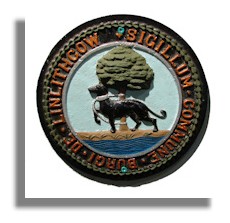
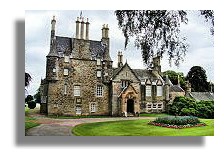
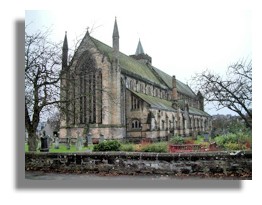

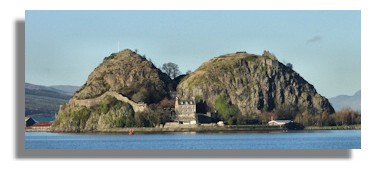
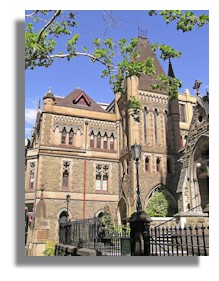 Perhaps the most visible daily reminder of Melbourne's rich Scottish heritage for tens of thousands of Melburnians is the imposing Scots' Church in the city centre. Built in 1874 this structure is situated in the heart of the CBD, on the corner of Collins and Russell Streets. Special services for the Kirkin' o' the Tartan are held here annually.
Perhaps the most visible daily reminder of Melbourne's rich Scottish heritage for tens of thousands of Melburnians is the imposing Scots' Church in the city centre. Built in 1874 this structure is situated in the heart of the CBD, on the corner of Collins and Russell Streets. Special services for the Kirkin' o' the Tartan are held here annually.
- Australian Dictionary of Biography - Online Edition
- Barnes, Les (1964). Place Names of Melbourne and Suburbs. (State Library of Victoria).
- Black, George F. (1996). The Surnames of Scotland. Edinburgh: Birlinn Ltd.
- Blake, Les (1977). Place Names of Victoria (Rigby).
- Brown-May, Andrew & Swain, Surlee (Editors) (2005). The Encyclopedia of Melbourne. Port Melbourne: Cambridge University Press.
- Clark, Ian D. & Heydon, Toby (2002). Dictionary of Aboriginal Placenames of Melbourne and Central Victoria. Melbourne: Victorian Aboriginal Corporation for Languages.
- Coulson, H. (1959). Story of the Dandenongs 1838-1958. F.W. Cheshire.
- The Encyclopaedia of Australia, New Zealand and Papua-New Guinea, 1965, Vol 3.
- Kennedy, Brian & Kennedy, Barbara (2006). Australian Place Names. Sydney: ABC Books.
- Kennedy, Brian & Kennedy, Barbara (1989). Australian Place Names. Sydney: Hodder & Stoughton.
- Kingston Historical Website
- Lay, Max (2003). Melbourne Miles: The Story of Melbourne's Roads. (Melbourne: Australian Scholarly Publishing).
- Martin, A.E. (1944). Place Names in Victoria and Tasmania. (NSW Bookstall Co.)
- Monash University Australian Places alphabetical listings sorted by locality and by Local Government Areaswebsite on Australian Places.
- O'Callaghan, T. (1918). Names of Victorian Railway Stations. Melbourne: H.J. Green, Acting Government Printer.
- Parliament of New South Wales website.
- Reed, A.W. (1973). Place Names of Australia. Sydney: A.H. & A.W. Reed.
- Scarlett, James D. (1975). The Tartans of the Scottish Clans. Glasgow & London: Collins.
- Shire of Nillumbik website
- Stephan, Debbie (1994). Place Names of Berwick (City of Berwick Historical Pamphlet 3).
- WikiNorthia: Documenting Life in Melbourne's North.
- Williams, C.F. (1985). The Origins of Box Hill Street Names: A Listing of Some of the Streets of Box Hill with Explanations as to their Known or Likely Origins. (Box Hill, Victoria: Box Hill City Council.)
- Melway, 2010 (Melway Publishing Company).
- Lenore Frost, member of the Essendon Historical Society.
- Members of the Victorian Committee of the Australian National Placenames Survey in general and Judith Scurfield, State Library of Victoria, in particular, for assistance with place names on the Mornington Peninsula.
- Websites, place name gazetteers and published Ordnance Survey maps of British and Irish cities, towns, villages and counties.
© Ian Kendall
If you wish to contact Ian about his research, his e-mail address is ian.kendall1@bigpond.com.
Melbourne, Australia, June 2004
(Revised January 2011)



